Colombia: Safer than Before, New Energy in the Air
By Max Hartshorne
GoNOMAD Editor

While there may be nothing as delicious to a travel writer than setting out to a country never before visited, there’s a lot to be said for coming back to a place that’s changed for the good.
A trip down to Colombia in February took me back to a country I’d visited twice before, the last time four years earlier.
On this trip, I found a state of relaxation and prosperity that was palpable and a lifting of the omnipresent security in malls, airports, and hotels.
Each place in the world has its own zeitgeist, its own particular brand of what makes it what it is, and sadly, for Colombia, it’s been the legacy of drug wars, kidnappings, and killings. As a result, there has always been an over the top security presence in all aspects of daily life.
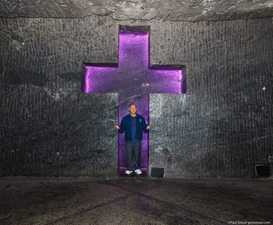
It was nice to bask in the sunlit narrow streets of Cartagena, walk a path through coffee trees in Pereira, and amble home late at night in Bogota without fear.
I definitely noticed fewer heavily armed soldiers and police on this trip, but still saw the regular legions of private security guards everywhere.
COFFEE COUNTRY OF COLOMBIA VIEW A PHOTO GALLERY FROM COLOMBIA
While I said hello to a bomb-sniffing dog at the entrance to our Bogota Hotel (the Hilton), at the airports, it was no longer mandatory to enter and exit from just one entrance.
Today the rule still is, ‘no dar papayas’ or don’t make it easy to rip me off. That means locking everything and avoiding walking down the streets counting pesos.
It’s pretty basic city etiquette, in a country where every house has a secure fence around it and the rich employ watchmen just in case.

Nowadays, Colombians talk about Mexico the same way the world once talked about Colombia. A generation born with a constant threat of drug lord induced violence has happily passed this mantle on to its northern neighbor.
Our February visit to the capital city, Bogota, the coffee triangle in the center of Colombia, and to the
sparkling city on the Caribbean coast, Cartagena was full of wonderful moments.
Booming Bogota
Our trip began in Bogota, where the metro area’s population is around 9 million all at an elevation of 8000 feet.
The city is divided into distinct neighborhoods, numbered 1-5, depending on income. We were told that the 5’s subsidize the health care for the 1s and 2s.
Connecting all of these diverse neighborhoods is a network of bus routes with dedicated lanes, some with as many as three or four attached buses, that run like trains, with passengers embarking and disembarking from raised platforms like a light rail system.
It’s called the TransMillenio and manages to move both the rich and the poor all over the city.

Our hotel, the Hilton, is located in the Rosales district, made up of many tall skyscrapers and financial offices.
This is an exciting time for the city Vilma Campos, the Hilton’s sales director told me over a drink in the bar. Oil and gas discoveries, as well as mining opportunities, have created a building boom here.
This hotel was built in 2011, and a year before, the JW Marriott luxury hotel opened nearby. “Sixty percent of our business is American businesspeople,” she said.
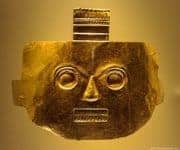
Sandro Leopardi, who owns a tour company here, told us all about his life’s journey that brought him to Bogota. He was born in Rome, then as a child moved to Venezuela.
When Chavez took office Sandro moved to Colombia and started his tour company Macondo. “I set the business up in three days,” he said. “Imagine doing that in Italy or in Venezuela!”
Bogota Felt Safe
Bogota felt very safe as we walked the streets, going past the home of legendary South American revolutionary hero Simon Bolivar and into the main square of the city.
A huge courthouse building here had once been totally destroyed by druglords, today, it’s rebuilt and stands as a modern counterpart to the older buildings that form the square.
Colombia is famous for its emeralds, we visited the Galeria Minas de Colombia to see hundreds of the green gems and learn about how they are mined today.
Another highlight for art lovers was the Fernando Botero Museum, where Colombia’s most famous artist, he of the balloon fat figures, has an impressive collection of works.
Botero himself peeks out among the gigantic women and men in the works, for anyone who is a fan of this museum, which is free, is a must-see. Another impressive museum here is the Museo d’Oro or Museum of Gold.
It’s packed with ancient gold and nearly as much gold as Fort Knox.
Into the Salt Mines
We took a trip outside of Bogota to Zipaquirá, in Cundinamarca, to visit what is reported to be Colombia’s number one tourist attraction. It’s The Salt Cathedral of Zipaquirá, a subterranean Roman Catholic church 200 meters down where miners once harvested industrial salts.
The miners now work in a different underground location but in the 1930s, some of them built their own sanctuary to pray in before descending into the mines. The original cathedral proved to be too dangerous, so a competition was created to find the best designs, across all of Colombia.
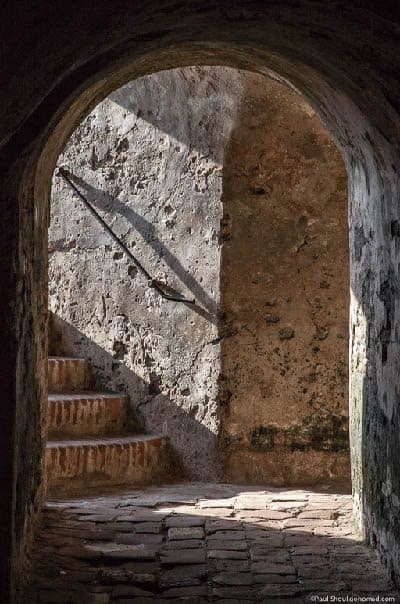
In 1995, today’s more modern iteration of the idea of creating 14 stations of the cross and a giant underground cathedral were completed. Today more than 8000 people can worship at once in the three huge sections of the cathedral. Descending down into the gloom emerging into the big cathedral space is pretty awesome.
To Cartagena on Avianca
Traveling with an executive from Avianca, Colombia’s national airline, gave us a chance to learn a lot about how air travel was pioneered in this mountainous country.
Avianca is the second oldest airline in the world, founded just after KLM way back in 1919. That’s because with the steep Andes separating the major cities, Colombia has always has to rely on planes for the bulk of intercity travel.
Avianca now owns TACA, the airline of Costa Rica, and is poised to expand into challenging LAN as the continent’s dominant air carrier. They will be flying Boeing 787 Dreamliners this summer, and now serve the US from ten major cities as well as Toronto Canada.
No longer do you need to stop in Miami to get to Colombia, and routes are opening up in Europe.
Exciting Cartagena de Indias
From Peirera, it was a 45-minute hop to the top of Colombia, to Cartagena on the Caribbean coast.
I had heard so much about this city, ever since GOP candidate John McCain visited in 2007 and President Clinton met Colombia’s president here in 2011. Cruise ships have been stopping at the city’s deep-water marine terminal for many years, today they see about 124 ships arrive each year.
There is no need to dock out in the harbor, they tie up right at the cruise ship terminal on Manga Island. Driving into Cartagena, the sea pounded the beaches to our left, and our guide Eddie began regaling us with the many historic dates of the city. First, it was founded in 1555 and has been fought over for centuries.

That’s why the impressive 11-kilometer wall was built around the old city, fending off advances from the French, the British and Spain, all of whom wanted this strategically located position at the lower southwest of the Caribbean.
Today Cartagena boasts hundreds of fine hotels–we got a chance to tour some of the nicest properties, beginning with the MONDIEA? There are rooms here with private swimming pools and some that open up to tiny hidden courtyards.
Sofitel’s Ultimate Hotel Room
What might be the pinnacle of the city’s high-end luxe hotels is the Sofitel Santa Clara, a seven-star property known as Sofitel Legend that impressed even a jaded travel writer like me.
The suite that was about to be occupied by movie star Harvey Keitel, in town for the Cartagena Film Festival, was one of the prettiest rooms I’ve ever seen.
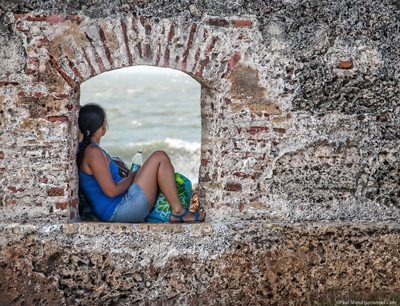
The massively high ceilings and tasteful decorations include an original Fernando Bertero painting, and the requisite elegant bath and private access.
Cartagena’s energy is in the streets. The walls of the 18th-century buildings are uniformly bright blue, or orange, or yellow, and the streets are so narrow that buses can often get into jams trying to fit.
Mix in a regular coterie of street vendors, double-parked taxis, and you’ve got a recipe for massive gridlock. Even entering the city’s historic district requires passing through a narrow arched opening.
More than one time we saw big buses having to back up, twist and turn to get anywhere…to me, it all cried out for taking a stab at prohibiting vehicle traffic in some parts of the old city.
Who knows, in a few years the government might just do that.
The city’s wall is a fine place for a walk in the sun, looking over the ocean. It feels safe, and it goes on for miles. This is a city that feels friendly and relaxed from the first moment you visit.
Speedboating out to the Isle de Sol
I had one more moment coming up that I’d reference as essential. That came when we met a man with a powerful speedboat down at the marina who took us out to Isle de Sol. Motoring past the giant docks with cranes that handle thousands of containers a month, we got into a channel and the boatman gunned the motors.
The twin 300 horsepower outboards kicked up a voluminous wake, and as we cracked open beers it became another magical day, a Thursday morning in paradise. This was moment two, being out on the water skimming toward a remote beach on an island called Ile de Sol. Beautiful!

We skimmed past a home in the mangroves that we learned was owned by the country’s president, who helicopters into the city for meetings.
Most of the buildings have thatched roofs, on one shoreline a large hotel had been abandoned, apparently built without permits and now left to rot. Locals sped toward us holding up just-caught lobsters trying to get us to buy.
We had another moment that is sometimes rare on a trip like this–time to sit on a beach. We donned our suits and swam out into the azure water, and cracked beers as we relaxed on the beach.
Yes, this was a great way to enjoy Thursday here outside of Cartagena. And a lobster feast was being prepared for us as we sat in the sun. Colombia had proven once again to be a very satisfying place to visit for all the right reasons.
Now I hope that my fellow Americans can embrace this country for all it offers, and come see how great it is!
Find out what’s happening in Cartagena at TICartagena.com, a highly recommended local website.
This trip was sponsored by Pro Export, which promotes tourism to Colombia.
Get more information about Colombia on their Visit Colombia website.
- Skiing in Georgia - February 21, 2024
- Exciting Rail Travel News in 2024 - February 4, 2024
- Last Minute Gifts for Christmas - December 17, 2023




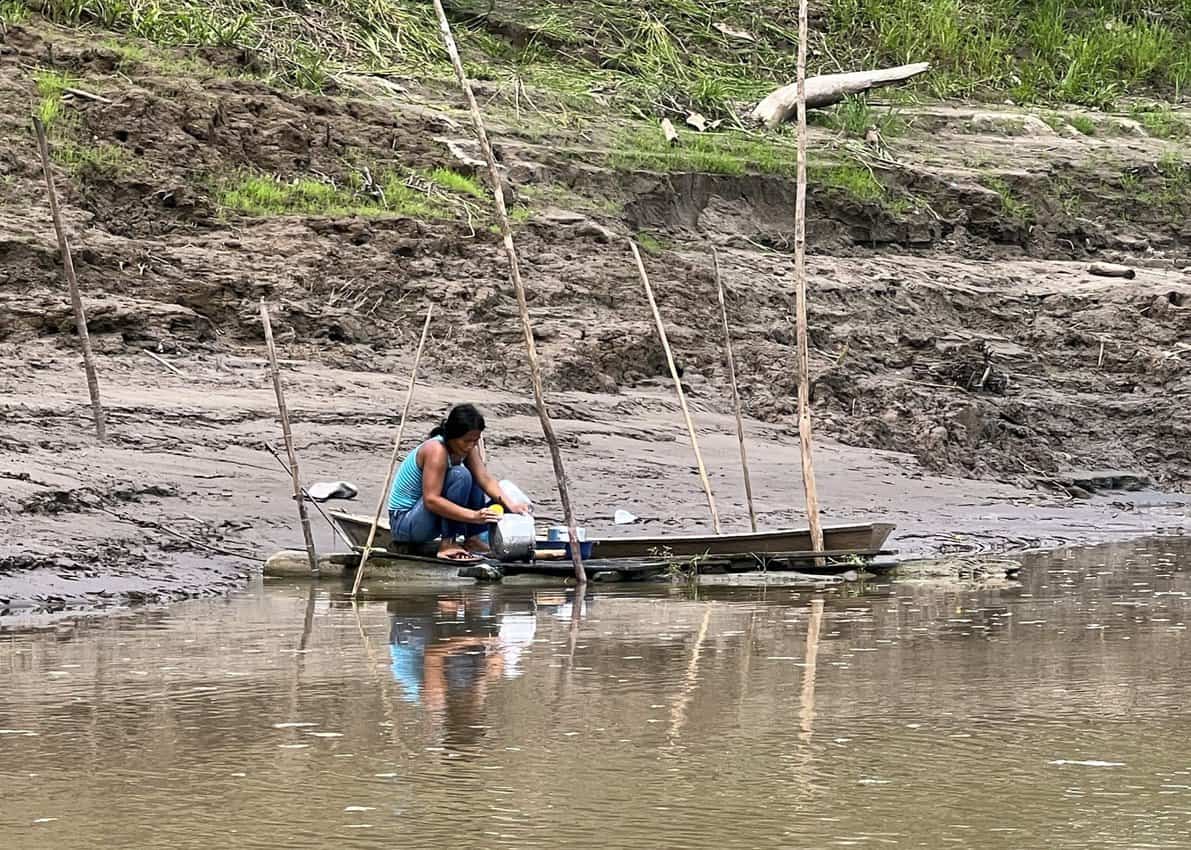
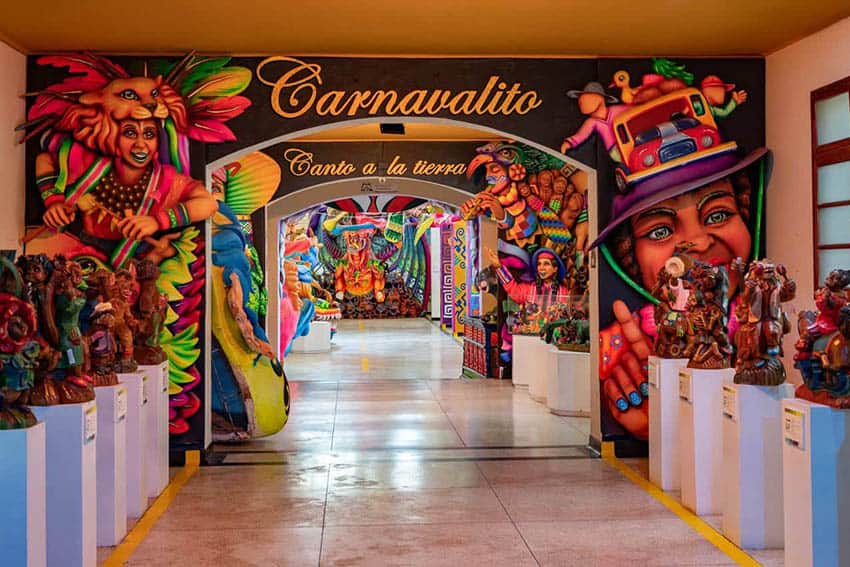
Very informative and interesting